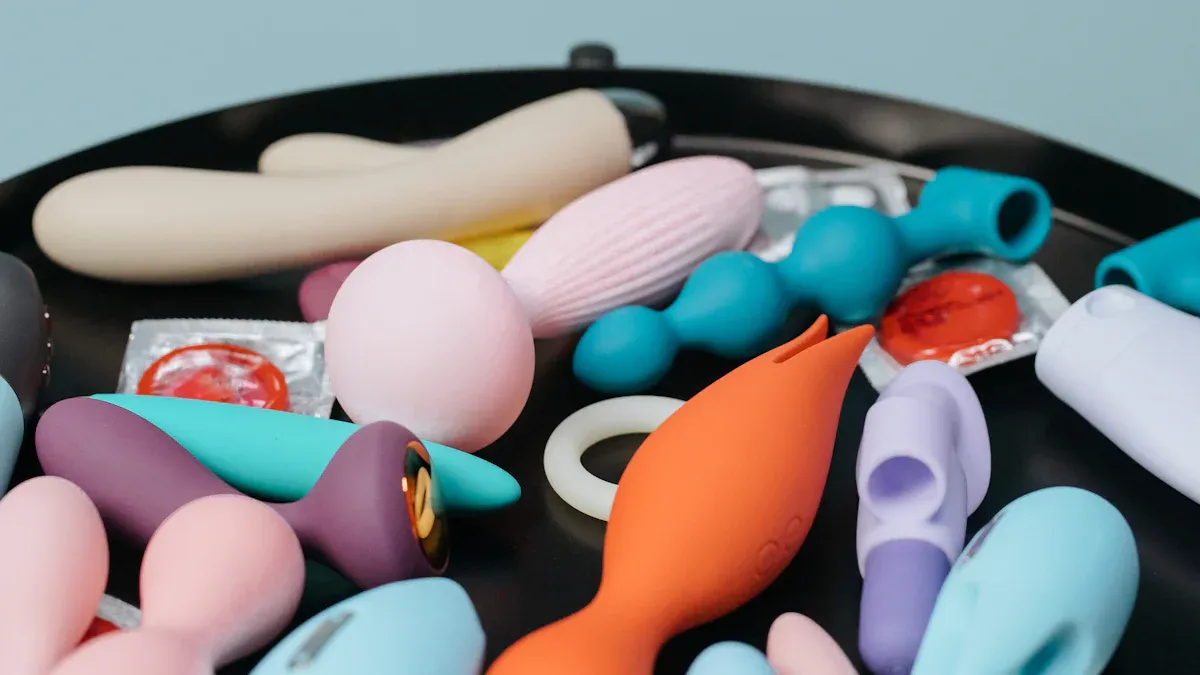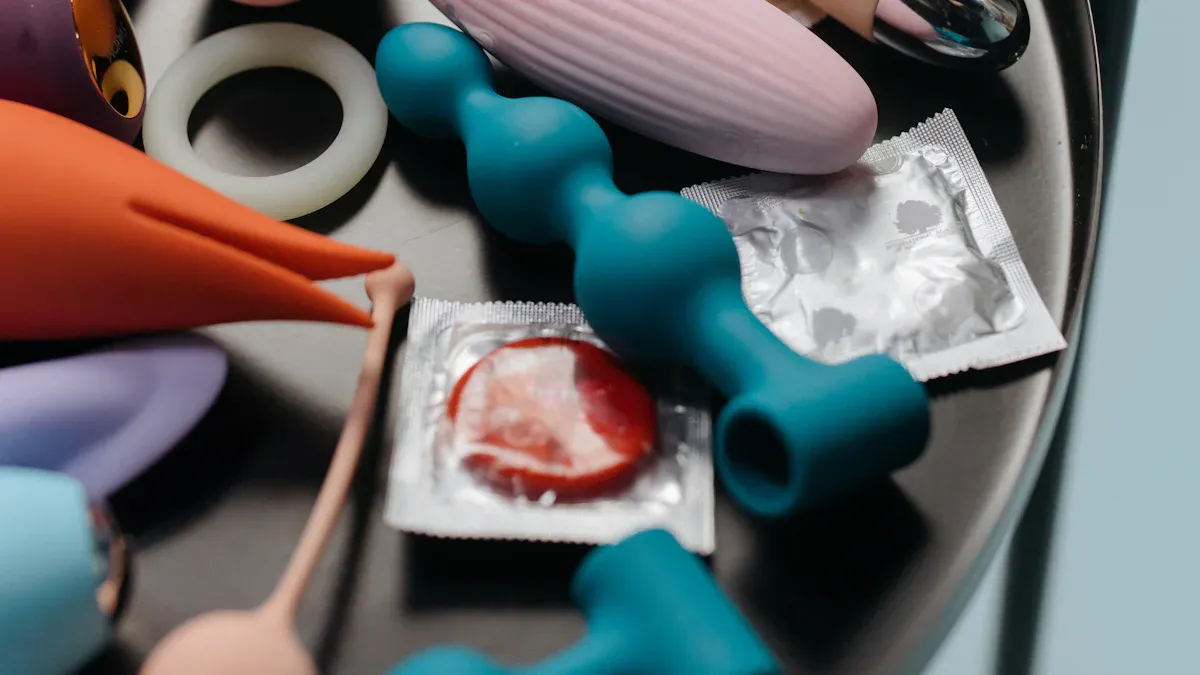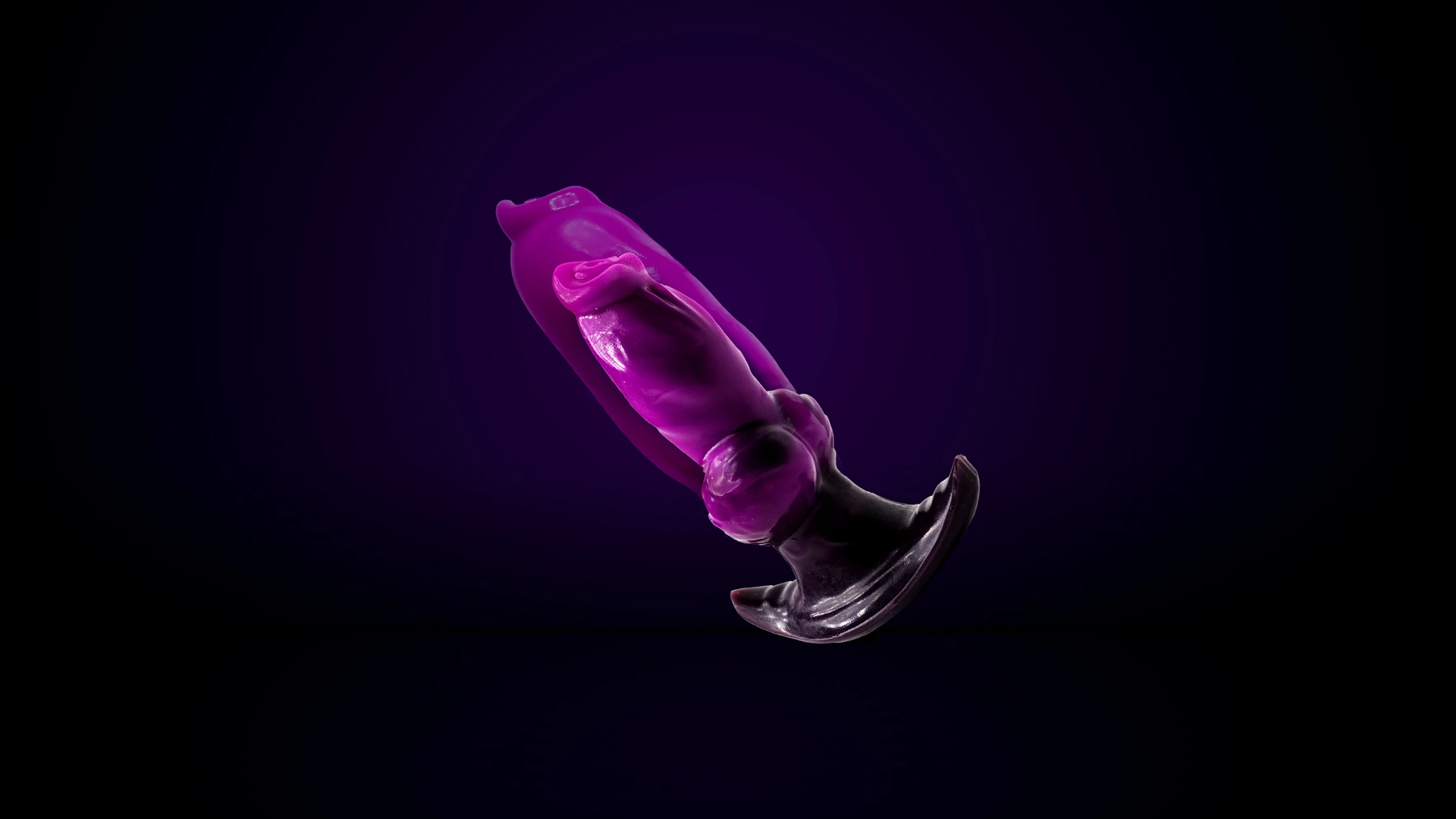Understanding Clear Dildo Materials and Their Safety Implications

Clear dildos are made from different materials with unique features.
Silicone is bendable and lasts a long time.
Glass is smooth, easy to clean, and looks nice.
Acrylic and PVC are cheaper but need careful use.
Inflatable dildos and heated dildos offer new, fun choices.
G Spot dildos are designed to hit special areas.
Knowing the right materials helps you stay safe and enjoy. It also helps people choose the best intimate products for themselves, including clear dildos, inflatable dildos, heated dildos, and G Spot dildos.
Common Materials in Clear Dildos

Silicone
Silicone is a favorite material for clear dildos. It bends easily, lasts long, and is safe to use. Medical-grade or food-grade silicone is non-porous. This means it doesn’t soak up germs or harmful stuff, keeping it clean and safe. Silicone dildos are also hypoallergenic, so they rarely cause allergies or skin problems.
Tip: Choose medical-grade silicone dildos for the best safety quality.
Silicone can handle heat, making it good for temperature play. But don’t use silicone-based lubricants with silicone dildos. These can harm the material. Use water-based lubricants instead for smoother use.
Glass
Glass is another great choice for clear dildos. Borosilicate glass is strong and hard to break. Glass dildos are non-porous, so cleaning them is simple. They work with all kinds of lubricants, giving users more options.
Glass can hold heat or cold for extra sensations. Its smooth surface feels fancy, and its weight adds a special touch.
Note: Check glass dildos for cracks or chips before using them.
Glass dildos look beautiful and last a long time. They are perfect for people who want both style and usefulness in their sex toys.
Acrylic
Acrylic is light and cheap, making it a common choice for clear dildos. It’s not as strong as silicone or glass but is good for beginners. Acrylic is non-porous, so cleaning it is fairly easy. However, it can scratch, which might trap germs.
Acrylic dildos come in many shapes and designs, making them fun to look at. They work with most lubricants, but users should be gentle to avoid damage.
Caution: Check acrylic dildos often for scratches or wear to stay safe.
Acrylic isn’t as tough or safe as silicone or glass. But it’s still popular because it’s affordable and comes in many styles.
PVC and Jelly Rubber
PVC and jelly rubber are popular for clear dildos because they are cheap and flexible. These materials let makers create many shapes, textures, and designs. This variety makes them attractive to people wanting unique options. But their safety needs extra attention.
PVC is a soft plastic that can be shaped easily. It’s used in sex toys because it’s affordable and versatile. Jelly rubber, a softer type of PVC, feels squishy, which some users like. However, both materials are porous. This means they can soak up bacteria and dirt, making cleaning harder and less hygienic.
Important: Always clean porous materials like PVC and jelly rubber well after use to avoid germs.
A big worry with PVC and jelly rubber is phthalates. Phthalates are chemicals that make plastics bendy but can leak out over time. These chemicals may cause health problems, like hormone issues. Because of this, many people choose safer, non-toxic options for sex toys.
PVC and jelly rubber often have coatings to look or feel better. These coatings can wear off, exposing the material underneath. This increases the chance of irritation or infection.
Tip: Pick clear dildos labeled as phthalate-free for safer use.
While PVC and jelly rubber are cheap and come in many styles, they aren’t as safe as silicone or glass. Users should think about the risks and choose materials that protect their health.
Safety Considerations for Clear Dildo Materials
Porosity and Hygiene Risks
Some materials soak up germs and fluids, making cleaning hard. Jelly rubber and certain PVC types are porous and can trap bacteria. This raises the chance of infections. Non-porous materials like medical-grade silicone and borosilicate glass are safer. They don’t hold harmful stuff and are easier to clean.
Many sex toys use materials that aren’t always safe for the body.
Porous materials can keep bacteria and even spread infections.
Many people don’t know what their toys are made of, which can lead to hygiene problems.
Choosing non-porous materials helps keep toys clean and lowers health risks. For example, body-safe silicone is gentle on skin and simple to clean.
Tip: Look for labels like “medical-grade silicone” or “food-grade silicone” to ensure safety.
Chemical Leaching and Toxicity
Some materials, like PVC and jelly rubber, may have harmful chemicals. Phthalates make plastics bendy but can leak out over time. These chemicals might mess with hormones and cause health problems.
Non-toxic options like medical-grade silicone and borosilicate glass are safer. They don’t release bad chemicals, even after long use. Silicone dildos are a trusted choice for safe materials.
Important: Pick clear dildos marked “phthalate-free” to avoid toxic chemicals.
Good brands share what their products are made of. This helps users choose wisely. Avoid toys with unclear labels, as they might not be safe.
Cleaning and Maintenance Challenges
Cleaning toys the right way keeps them safe and lasting longer. Non-porous materials like glass and medical-grade silicone are easy to clean. They don’t grow bacteria and can be sanitized with boiling or toy cleaners.
Porous materials are harder to clean and can wear out faster. Bad cleaning methods can damage them, causing tears or scratches. These issues make cleaning even harder.
Rough use can harm softer materials, causing breaks or wear.
Cracks or scratches in acrylic or glass can trap germs.
Check toys often for damage and replace broken ones quickly. This helps avoid infections or irritation.
Note: Follow cleaning instructions from the maker to protect the material. For example, don’t use silicone-based lubricants with silicone toys, as it can ruin them.
Knowing how to clean and care for different materials helps toys last longer and keeps users safe.
Identifying Body-Safe Sex Toys
Certifications for Safe Materials
Certifications show that sex toys are made from safe materials. They confirm products don’t have harmful chemicals and are safe to use.
Safety Standard | What It Ensures |
|---|---|
ISO 3533 | Toys are safe for sensitive body areas. |
FDA Requirements | Labels and tests prove the product is safe. |
California Proposition 65 | Limits toxic chemicals in everyday items. |
Lab Testing | Checks materials through safety and chemical tests. |
Other important certifications include:
ISO 13485: Ensures safety and quality for medical and personal care items.
ASTM F963-17: Tests how safe and reliable products are.
Phthalate-Free Certification: Confirms no harmful plastic chemicals are used.
Medical Grade Materials: Shows materials like medical-grade silicone are body-safe.
These certifications help users feel confident when choosing clear dildos or other intimate items.
Recognizing Unsafe Materials
Knowing which materials to avoid keeps users safe. Porous materials, like jelly rubber and some PVC, can hold germs. This raises the chance of infections. Phthalates, used to make plastics soft, may leak toxins over time. These toxins can harm hormones and health.
Unsafe materials often don’t have clear labels or certifications. Avoid toys with unclear descriptions or ones not marked phthalate-free. Look for cracks or scratches, as damaged toys can trap germs and irritate skin.
Non-porous materials like medical-grade silicone or borosilicate glass are safer. They are strong, easy to clean, and free of harmful chemicals.
Transparency from Manufacturers
Good brands share clear details about their products. Some companies provide Certificates of Analysis (COAs). These show material details, batch numbers, and test results. This proves the products meet safety rules and are safe to use.
Groups like the Consumer Product Safety Commission (CPSC) stress the need for honest product information. They ask for tested data and reliable methods. When brands share this info, it builds trust and helps users check product safety.
Choose brands that list materials, certifications, and test results clearly. This ensures you’re buying safe sex toys made from high-quality materials.
Best Practices for Clear Dildo Care

Cleaning Techniques for Safety
Keeping clear dildos clean is very important. Different materials need specific cleaning methods to stay safe and free of germs. First, know what material your toy is made of. Non-porous materials like body-safe silicone and food-grade silicone are easier to clean. Wash them with warm water and mild soap or use toy cleaners. Boiling silicone toys for a few minutes can sanitize them completely.
Cleaning regularly helps toys last longer. Non-porous materials like borosilicate glass are also simple to clean. Porous materials, like jelly rubber or some PVC, need extra care. These can hold bacteria, so using a condom during use can lower risks. Always clean toys right after using them to stop germs from building up.
Tip: Don’t use harsh cleaners or rough tools. They can harm the toy’s surface.
Proper Storage Tips
Storing clear dildos the right way keeps them safe and lasting longer. Use clean spaces like satin pouches or storage boxes to protect toys from dust and damage. These storage options prevent scratches and keep toys in good condition.
Porous materials should be kept away from heat, which can weaken them. Humidity can also harm some materials, so store toys in dry places. Avoid direct sunlight, as it can make materials wear out faster.
Note: Store toys separately to stop reactions between different materials.
Signs It’s Time to Replace Your Toy
Clear dildos don’t last forever, even with good care. Knowing when to replace them is important for safety. Cracks, chips, or scratches can trap germs, making the toy unsafe. Porous toys might smell bad or change color, showing they’re no longer clean.
If a toy feels sticky or its texture changes, it may be breaking down. This happens more often with cheaper materials. If a toy’s coating starts peeling, throw it away immediately. Check toys often for these problems to keep them safe to use.
Important: Replace toys with any damage to avoid health risks.
Knowing about clear dildo materials is key to staying safe. Strong, non-porous materials like glass and silicone are the best. They last long and are easy to clean. Always pick body-safe materials and avoid porous ones that hold germs.
Taking care of toys helps them last longer and stay safe. For example:
Material | How to Clean |
|---|---|
Silicone | Use soap and water; some need special cleaners. |
Rubber | Might have parabens; check cleaning instructions. |
Glass | Easy to clean; follow the maker’s advice. |
Clear labels with safety tips stop people from using toys wrong. The FDA wants clear labels for personal care items, including sex toys.
By picking good materials and cleaning them right, users can use their toys safely and with confidence.





